What Is Last Mile Delivery In 2024? Trends And Best Software
The last mile delivery market has been growing and will continue to do so as eCommerce and e-tail gain traction. By now, everyone is well aware that the pandemic pushed eCommerce adoption forward, leading to an unprecedented spike in demand for last mile carriers and delivery companies.
Considering this staggering growth, delivery businesses and last mile service providers need to find ways to deliver more without investing in new last mile fleet delivery vehicles and hiring extra drivers. But how? How can last mile logistics businesses increase parcel volume and expedite deliveries? And, how can these companies do so while also keeping operational costs as low as possible?
This article will answer the most frequently asked questions about last mile routing. Particularly, by reading further, you will learn about what the last mile is, the difference between the first mile, middle mile, and final mile, last mile challenges and opportunities, and a lot more!
Table of Contents
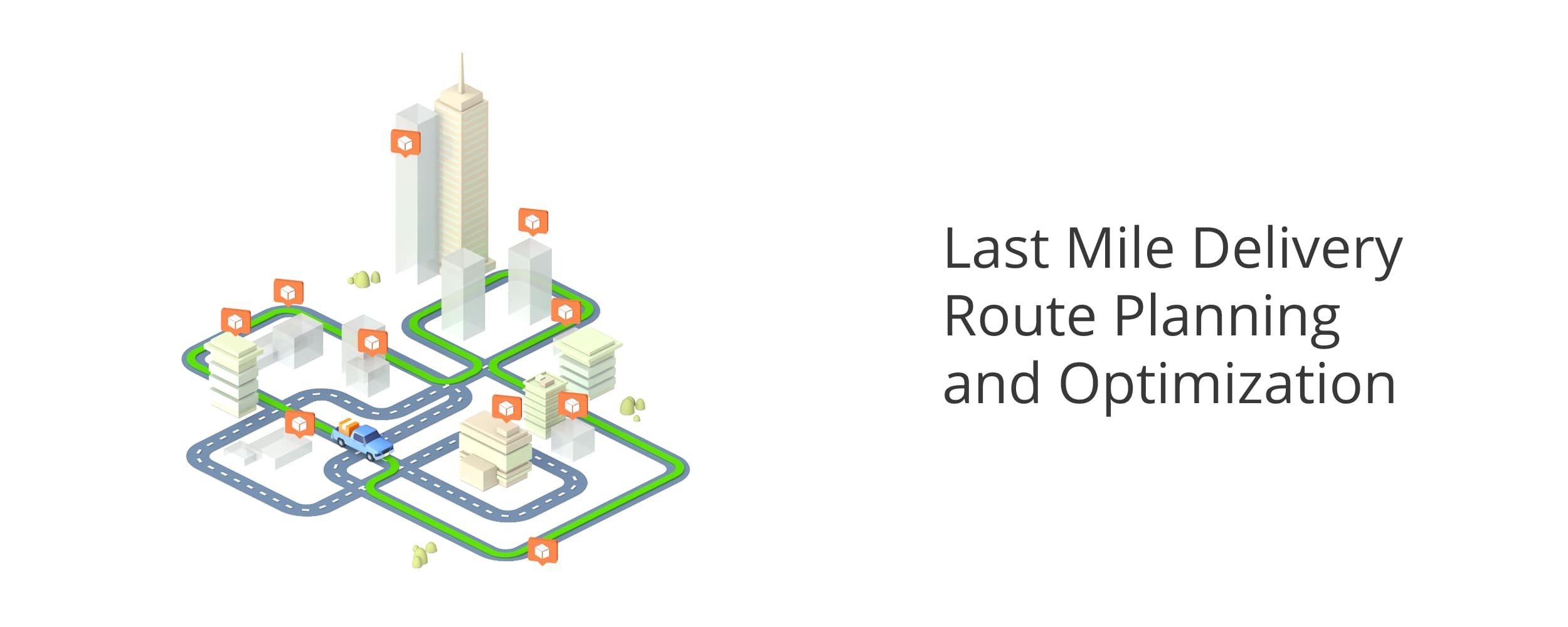
Definition Of Last Mile Delivery
The last mile delivery definition refers to the delivery of products from a warehouse, a dark store, or a fulfillment center to the end customer. Specifically, the last mile definition illustrates the last step in a product’s journey from the factory door to the end customer. At the same time, the last mile is the most expensive operation within the supply chain.
Read on to discover more about:
- What is the last mile delivery meaning
- The costs of last mile delivery and opportunities for savings and growth
- What is the last mile carrier meaning
- The most in-demand last mile carriers in 2024
- What is the last mile meaning in logistics
- The last mile routing problem
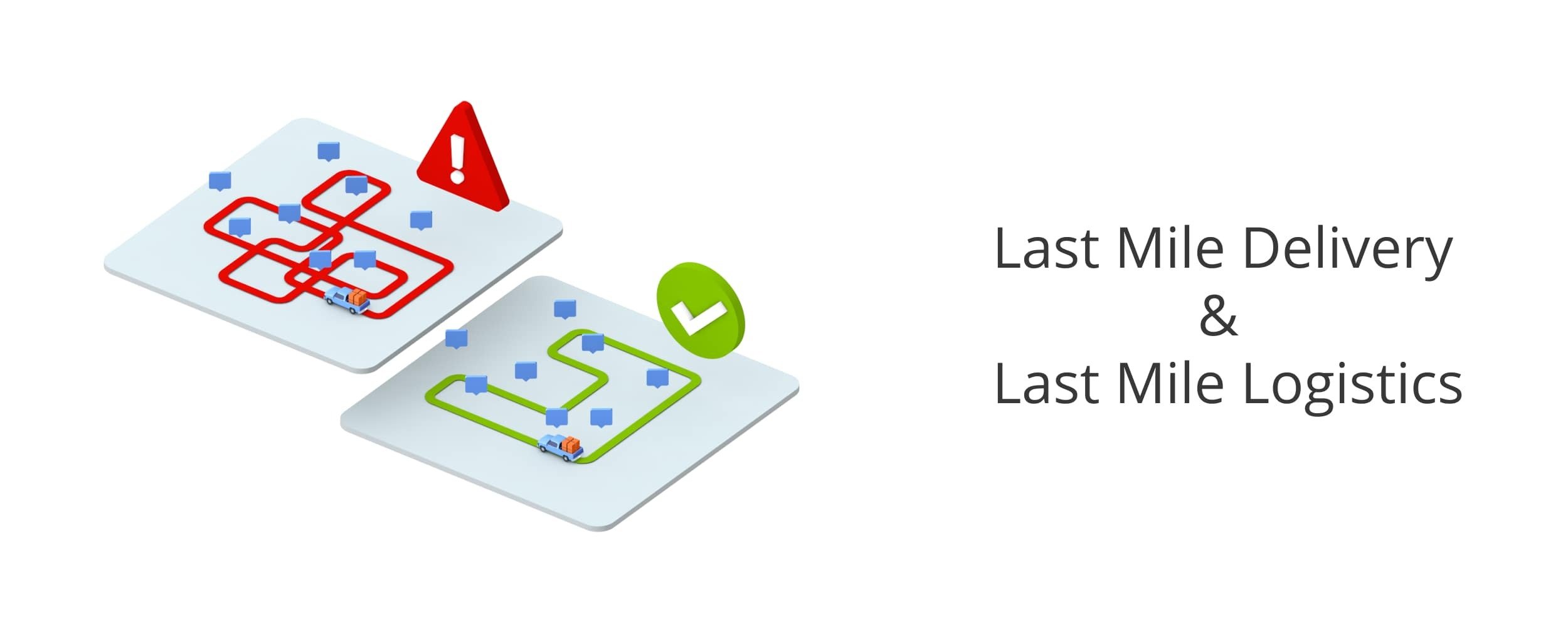
Last Mile Frequently Asked Questions
Below, you’ll find the answers to the most common last mile routing FAQs. In detail, during decades of an extensive last mile optimization experience, our team has gathered the most frequently asked questions about last mile logistics from Route4Me customers and provided comprehensive answers to help any professional win the last mile.
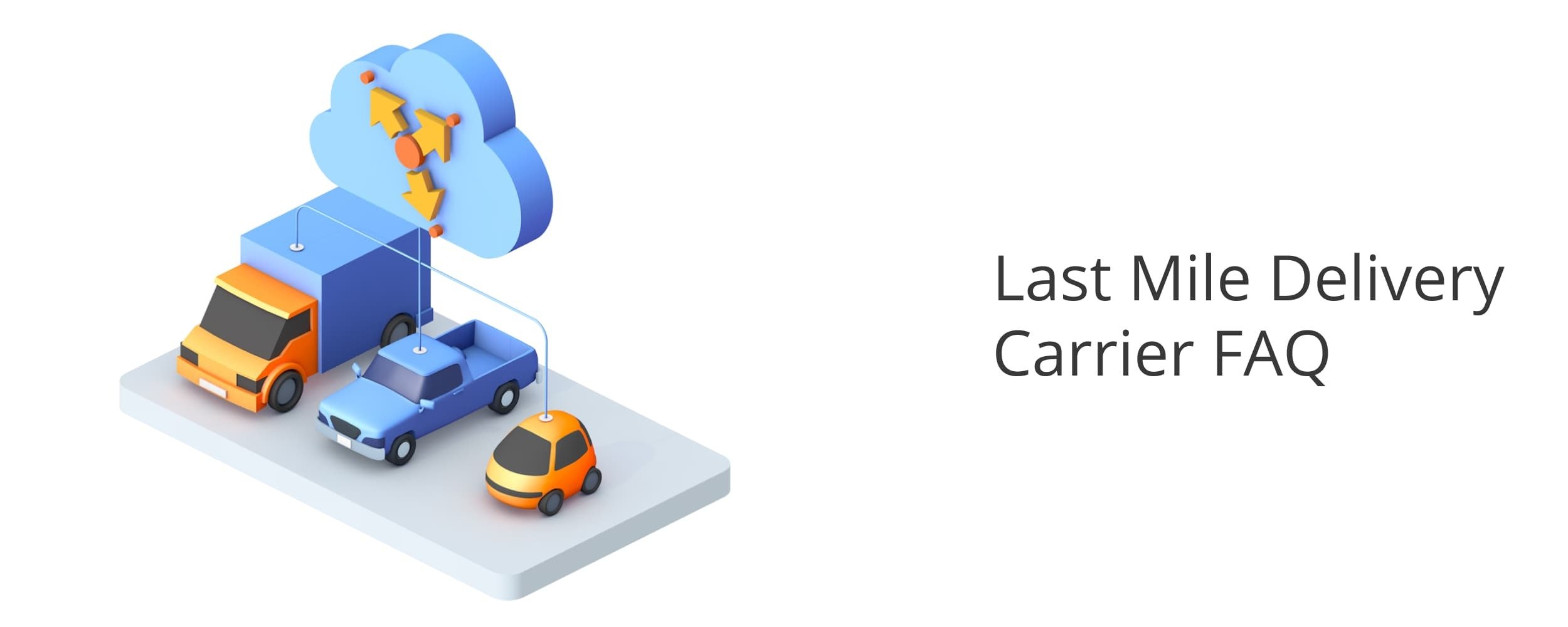
The term “last mile” was first utilized in the telecommunications industry to define the process of connecting consumers to the main telecommunications network. Similarly, in logistics, last mile refers to the last leg of transporting goods or people from a fulfillment center, last mile sorting center, or transportation hub to a specific location or address.
Moreover, last mile logistics is among the most challenging segments of supply chain management as it implies multiple processes, such as order fulfillment, inventory management, package delivery, last mile delivery tracking, route planning, route optimization, collecting proof of delivery, etc.
Last mile delivery is the final step in the process of order fulfillment. Namely, last mile delivery entails transporting products from the warehouse shelf to customers’ doorsteps. For example, such delivery services as the last mile delivery Amazon usually entail:
- Picking orders from the shelves of the fulfillment centers
- Packing and labeling the ordered products
- Loading packages in delivery trucks and vans
- Planning routes for efficient delivery
- Delivering packages to customers’ homes
To keep their last mile delivery operations as cost-efficient and time-effective as possible, Amazon plans delivery routes using their proprietary route optimization software. This routing technology and the strategic placement of Amazon fulfillment centers enable them to leverage fast delivery services, such as same-day delivery.
But this doesn’t mean that smaller last mile routing operations cannot stack up against industry giants. On the contrary, small and medium delivery businesses can use route optimization software to keep up with the industry standard. For instance, Route4Me’s last mile logistics software helps logistics intense businesses:
- Get up to 500% ROI
- Put delivery route planning and delivery scheduling on autopilot
- Capitalize fully on fleet vehicles and mobile workforce
- Deliver more packages faster with the same amount of, or even fewer, resources
- Cut last mile delivery costs up to 30%
- Reduce drive time by 35%
- Plan optimized routes with multiple stops in less than 60 seconds
The first mile is the process of transporting finished products from a factory or production facility to a warehouse. Specifically, the first mile represents the first leg of a product’s journey to the end customer. However, there are a few minor variations of the first mile definition across industries. For example, the first mile in eCommerce might simply represent transporting a product from a retailer to a last mile carrier or a last mile delivery group.
The middle mile is the supply chain step following the first mile, where goods are hauled from the supplier’s or merchant’s warehouse to a fulfillment center, a retail store, dark store, distribution hub, etc. Just like the last mile, the middle mile can offer logistics businesses opportunities for savings and automation.
For example, with Route4Me’s logistics optimization software, you can automate route planning for your middle mile delivery operation. Specifically, Route4Me enables you to create recurring delivery schedules for repetitive routes. By doing so, your routes will be automatically created according to the created schedule.
The difference between first mile and last mile routing logistics is that the first mile entails shipping products from a merchant or manufacturer to a warehouse or fulfillment center, while the first mile is the process of delivering goods to the end customer. So, the main difference between the two supply chain operations consists of the destination to which the order needs to be delivered. Specifically, after a product is manufactured and ready to leave the production plant, the first mile begins.
And, during the first mile, the ordered goods are transported to a distribution hub. From there, last mile routing begins and the orders are to be delivered to the end customers. Namely, the products can be transported to a customer’s home address, an in-store pickup point (click and collect), at the curbside, inside a smart locker, etc.
The difference between the middle mile and last mile resides in the fact that the middle mile entails fixed routes between depots, warehouses, dark stores, etc., and the last mile consists of dynamic delivery routes from a depot, warehouse, etc. to end customers’ addresses.
Moreover, both these supply chain operations can represent savings opportunities or a chance for business growth. In detail, with such logistics and fleet management software as Route4Me, logistics intense businesses can optimize both their last mile and middle mile operations. For example, with Route4Me, logistics professionals can:
- Leverage dynamic route optimization for last mile routes
- Automate route planning and scheduling for recurring middle mile routes
- Manage fleet vehicles and drivers from a single platform
- Track deliveries and offer order last mile tracking services to customers
- Increase customer engagement and satisfaction
- Collect customers’ feedback
- Audit your entire infrastructure and identify opportunities for improvement
- And a lot more!
The benefits of optimizing the last mile with last mile delivery software range from cost-cutting and operational improvements to fleet capacity optimization and driver productivity boosts. For example, with the Route4Me best route optimization software, last mile carriers can:
- Improve delivery visibility and transparency for customers and managers alike
- Create optimized routes with hundreds of thousands of addresses in less than 60 seconds
- Increase customer engagement and satisfaction as well as driver retention rates
- Boost driver productivity and vehicle capacity utilization
- Increase profitability and deliver more packages faster and with fewer resources
- Improve order management and speed up order fulfillment
- And a lot more!
Last mile logistics is the process of hauling manufactured goods from a warehouse, distribution center, or transportation hub to customers’ addresses, pickup points, click and collect locations, smart lockers, etc. Moreover, the last mile logistics meaning is always tied to the highest costs in the whole supply chain. Specifically, last mile delivery is responsible for more than half of the total cost of shipping.
However, these costs can be easily reduced by using last mile delivery software such as Route4Me. For instance, with the Route4Me route optimization software, logistics businesses can cut last mile transportation costs by up to 30%. Read on to learn more about how last mile software can help you grow your business.
The last mile problem definition refers to the Vehicle Routing Problem (VRP) or the Travelling Salesman Problem (TSP) which entail computing the fastest and most time-efficient routes that visit multiple addresses. Moreover, the last mile problem takes on new layers of complexity when larger vehicle fleets and multiple customer constraints and business rules are accounted for. And, any inefficiency in solving the last mile problem translates into added expenses.
To avoid such instances, logistics companies use route optimization and fleet management software. For example, Route4Me’s route planner helps businesses and individual drivers to:
- Plan and optimize multi stop routes
- Efficiently manage fleet capacity utilization
- Reduce delivery expenses by up to 30%
- Account for customer constraints such as business hours and delivery time windows
- Factor in business rules such as vehicle loading and carrying capacity
- Monitor and reduce fuel consumption and idling
- And much more!
Keep reading to find out how you can optimize your last mile operations for free.
Last mile carriers are logistics intense companies that offer last mile delivery services mainly to businesses, but also to individuals. Specifically, a last mile carrier would collect goods from a third party (for example an eCommerce store, a factory, etc.), provide warehousing, and transport the received ordered packages to the end customer (for example a customer, a brick and mortar store, etc.). The latter can imply multiple expenses as a consequence of a lack of optimization and automation in terms of:
- Driver tracking
- Route planning
- Route optimization
- Delivery scheduling
- Route dispatch
- Order tracking
Businesses that offer last mile delivery services are referred to as last mile carriers. For example, the most sought-after delivery providers in 2024 include:
- Amazon last mile delivery
- UPS global shipping and logistics services
- USPS postal services
- FedEx tracking, shipping, and locations
- And other similar local delivery providers
Furthermore, to be able to offer on time delivery and delight customers, top tear last mile carriers utilize route optimization technology. For instance, UPS and FedEx have built their own dynamic route optimization software that allows them to efficiently route deliveries. And to enable logistics-intense businesses to reise to these high standards and customer expectations set by UPS, Amazon, and FedEx, Route4Me’s route planning and quickest delivery routing software helps professionals optimize their entire last mile operations.
Additionally, learn more about FedEx delivery driver jobs on their official website. Also, you can learn more about FedEx delivery driver salaries on such websites as Glassdoor.
Last mile delivery can benefit any business that looks to expand their portfolio and reach more customers by offering home delivery services. Such companies can include:
- Brick and mortar stores transitioning to eCommerce
- Flower shops that are willing to offer flower delivery services
- Restaurants, catering, and any establishment that can increase sales by offering a food delivery option to customers
- Companies that want to implement a door-to-door sales business model
- Pool cleaning, lawn care, snow removal service providers
- And any other business looking for an opportunity to sell more
Last mile logistics is more than important to today’s logistics-reliant businesses (such as e-tail, eCommerce, flower delivery, lawn care, etc.) as it’s the only customer-facing process of the entire supply chain. Therefore, last mile logistics can make the difference between delivery front runners and mediocre carriers.
In detail, customer expectations keep evolving and services like same-day delivery become more and more popular. In fact, customers are even willing to pay more for faster delivery. And since last mile logistics giants such as Amazon, UPS, and FedEx set the tone for these high standards, small and medium-sized delivery businesses need to adapt.
So, to stay afloat and be able to compete with the industry pacesetters, delivery businesses can rely on Route4Me’s dynamic routing software. Specifically, with Route4Me’s route planner, logistics professionals can:
- Plan the most optimal routes with a wide range of customer constraints and business rules in under a minute
- Deliver more parcels faster and with fewer fleet vehicles and delivery drivers
- Maximize visibility into the profitability of the entire operation
- Reduce fuel costs and the organization’s overall carbon footprint
- Monitor and improve the quality of your customer service
- And more!
Keep reading to gain deeper insights into the benefits of using last mile enterprise delivery routing software in 2024.
Last mile delivery is so expensive because it’s the supply chain segment that relies on the largest number of field employees. Specifically, last mile delivery depends on multiple drivers to transport packages to customers’ doorsteps or pickup points. Plus, with any added delay or operational inefficiency, last mile delivery costs can add up and thin out the margins of carriers. Thus, today’s most successful delivery businesses use route optimization software to plan the shortest and fastest last mile routes, deliver faster, and cut costs as much as possible.
Read further to discover real-life case studies and success stories of last mile carriers that managed to grow their profits with Route4Me’s route planning software.
The cost of last mile delivery takes up the biggest share of the total shipping expenses, being accountable for over 50% of the delivery cost. Moreover, delivering a last mile package costs on average $10 from which only $8 are charged to the customers. This means that carriers are always on thin ice when it comes to profitability – unless they optimize their route properly and automate any repetitive tasks.
For instance, delivery businesses that use Route4Me’s last mile delivery software can reduce their last mile shipping expenses by up to 30%.
To improve last mile delivery, businesses need to find the best way to navigate congested cities and still deliver on time, while reducing idling, minimizing fuel consumption, and increasing the number of parcels that can be delivered during a driver’s shift. Moreover, carriers need to be able to implement such efficiencies at scale and constantly look for new cost-cutting opportunities that don’t compromise the quality of their service.
All of the above and more can be easily achieved with capable last mile software. For example, last mile businesses that partner up with Route4Me manage to gain full visibility into their operation, optimize their order fulfillment processes, and enable sustainable business growth, while increasing customer satisfaction and driver retention rates. Read on to learn how Route4Me can help your business win the last mile as well.
To optimize the last mile, the most successful delivery businesses use dynamic routing, live driver tracking, fleet management, order management, and delivery scheduling technology. For example, UPS plans deliveries with their proprietary route optimization software called ORION. And FedEx utilizes their in-house developed dynamic route optimization (DRO) software. This routing technology helps today’s delivery businesses optimize the last mile.
In the same manner, Route4Me’s route optimization software enables businesses to optimize last mile logistics and:
- Use flexible delivery scheduling and dynamic routing tools
- Provide near real time order tracking information to customers
- Track drivers in near real-time on an interactive map
- Log and monitor logistics KPIs, last mile analytics, and delivery metrics
- Reduce drive time and mileage with optimized routes
- Use the in-app voice-guided navigation for the most optimal walking, bicycling, and driving directions, etc.
With these features, logistics-intense firms can easily improve the quality of their last mile services and make more money while also cutting costs.
Last mile proof of delivery is a paper slip on which customers need to write down their signatures to confirm that they received the delivered package. Furthermore, proof of delivery (POD) can also take the form of an electronic file that serves the same purpose as the paper POD.
However, last mile delivery electronic proof of delivery (ePOD) gives drivers the ability to collect the delivery confirmation in multiple ways. For instance, with Route4Me’s last mile apps, delivery drivers can collect ePOD files in the following formats:
Last mile delivery software is the solution that helps logistics professionals automate repetitive logistics processes (i.e. route planning, route dispatch, etc.), increase operational efficiency, and be on top of ever-evolving customer requirements and industry standards.
For example, Route4Me’s last mile delivery software gives logistics-intense businesses the opportunity to manage multiple processes from a single platform. Specifically, with Route4Me, last mile carriers can manage an entire fleet of vehicles, create detailed organizational structures, plan and optimize routes with hundreds of thousands of addresses via last mile routing, and a lot more.
The best last mile delivery software in 2024 has to cater to a business’s unique logistics needs, automate repetitive processes, help leverage operational efficiencies, and improve visibility into the entire last mile operation. Although, choosing the best last mile delivery software depends on a carrier’s specific requirements, there are a couple of highly versatile solutions that can address a wide range of demands. So, the best last mile delivery software solutions in 2024 include:
- Route4Me
- OptimoRoute
- Onfleet
- MyRouteOnline
- Circuit
- Routific, etc.
Read further to learn more about the best last mile delivery software in 2024 and which solution is more suitable for your unique business model.
In short, the Amazon Flex app allows you to use your own vehicle to deliver packages for Amazon. So, the next question is how to apply for Amazon Flex and become an Amazon driver. First, download the Amazon Flex driver app on your Android or iPhone. After that, complete the Amazon Flex sign-up process right in the app.
The Amazon Flex requirements are more flexible than the regular Amazon delivery driver requirements. Specifically, the difference between an Amazon Prime delivery driver and an Amazon Flex driver is that the latter is an independent contractor delivery job. The requirements for becoming an Amazon Flex driver are the following:
- Live in the city where Amazon Flex works
- Age is 21 or older
- Valid U.S. driver’s license
- Mid-sized or larger vehicle
- Android or iPhone smartphone
Once you set up your Amazon Flex application and account, you can start delivering for Amazon. Furthermore, Amazon Flex will automatically outlay optimal routes for you to complete each delivery.
Successful Last Mile Delivery Examples
Last mile delivery is an essential process across many industries, including eCommerce, retail, flower delivery, etc. Since it’s the final and most important stage of the order fulfillment chain, businesses look for time and cost optimization opportunities. For example, last mile businesses partner up with Route4Me to increase the profitability of their operation, identify openings for growth, and reduce operational expenses.
Here’s how companies activate in different industries optimized their last mile routing while using Route4Me’s route optimization software:
- ENYP – EQUIPPING | NURTURING | YOUNG PEOPLE managed to keep up with a 357% increase in delivery demand
- Adas Israel Congregation optimized their delivery routes, minimized drive time, and improved their resource utilization levels
Read more last mile delivery examples and case studies and get inspired by other businesses’ success stories.
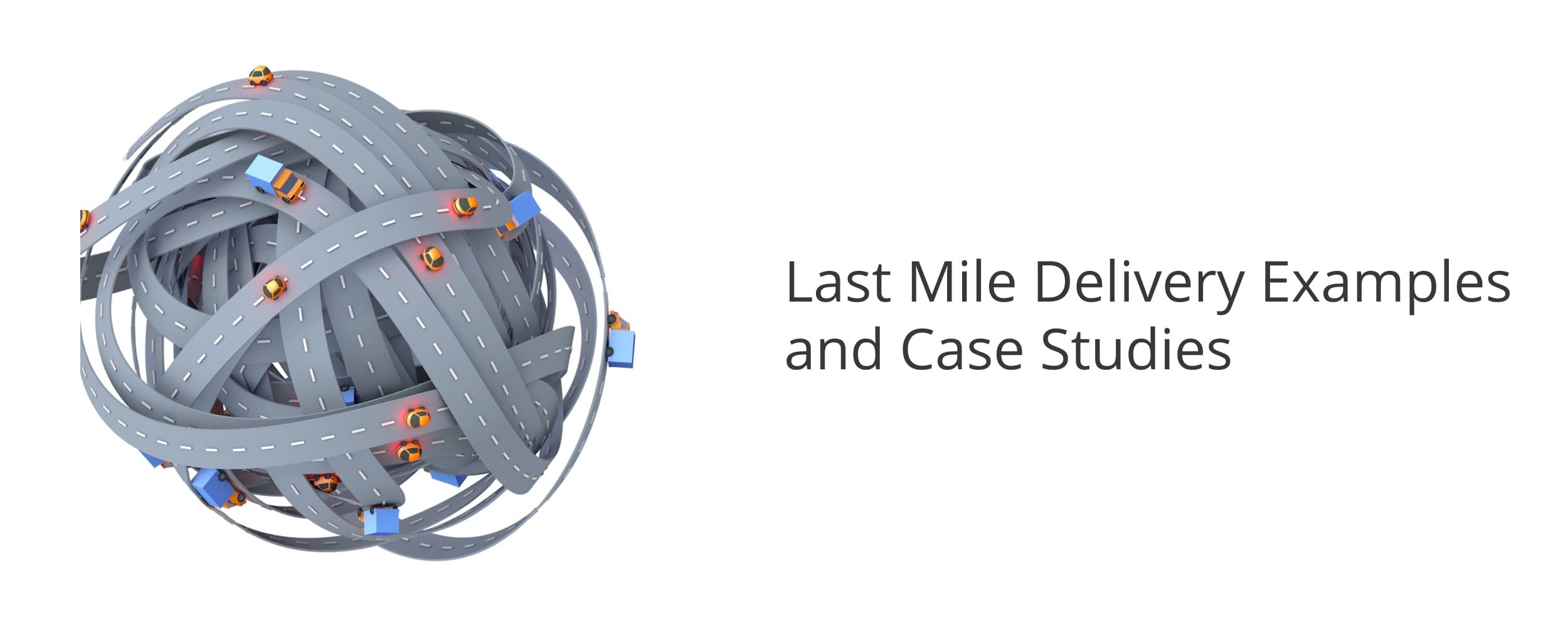
The Components Of Last Mile Delivery And Planning Process Overview
When a customer places an order, the last mile delivery engines get fired up and order fulfillment begins. Here’s how last mile delivery works and what the main components of this logistics process are:
- Customers place orders: First, a customer places an order on an eCommerce store, using an app, or over the phone, etc., and starts tracking order status.
- Orders are being prepared for shipping: Next, the ordered products are properly packaged, labeled, and handed to a last mile carrier.
- Carriers issue an order tracking number for the customer: Once the last mile carrier receives the ordered goods, they assign a tracking number to the package so that the customers can accurately track orders.
- Addresses on packages are sequenced within driver routes: The delivery business centralizes the received orders and strategically routes the recipients’ addresses to ensure maximum operational efficiency.
- Routes are dispatched to delivery drivers: After planning the routes, drivers are assigned to routes depending on skills and expertise.
- Drivers scan the packages before loading them into delivery vehicles: By doing so, the order status will be updated on the customer’s end. This also helps drivers accurately keep track of what parcels they have on board, minimizing the risk of packages getting lost.
- Drivers navigate routes and deliver packages: After everything is set at the depot, drivers start navigating their routes. More often than not, delivery drivers use mobile applications for GPS navigation, such as Google Maps, Waze, route planner apps, etc.
- Deliveries are completed and drivers collect proof of delivery (POD): As soon as drivers drop off a package, they collect POD. Specifically, drivers need proof that the service was successfully completed by collecting customer signatures, recording a customer statement, taking a photo, adding a note to the respective stop, etc.
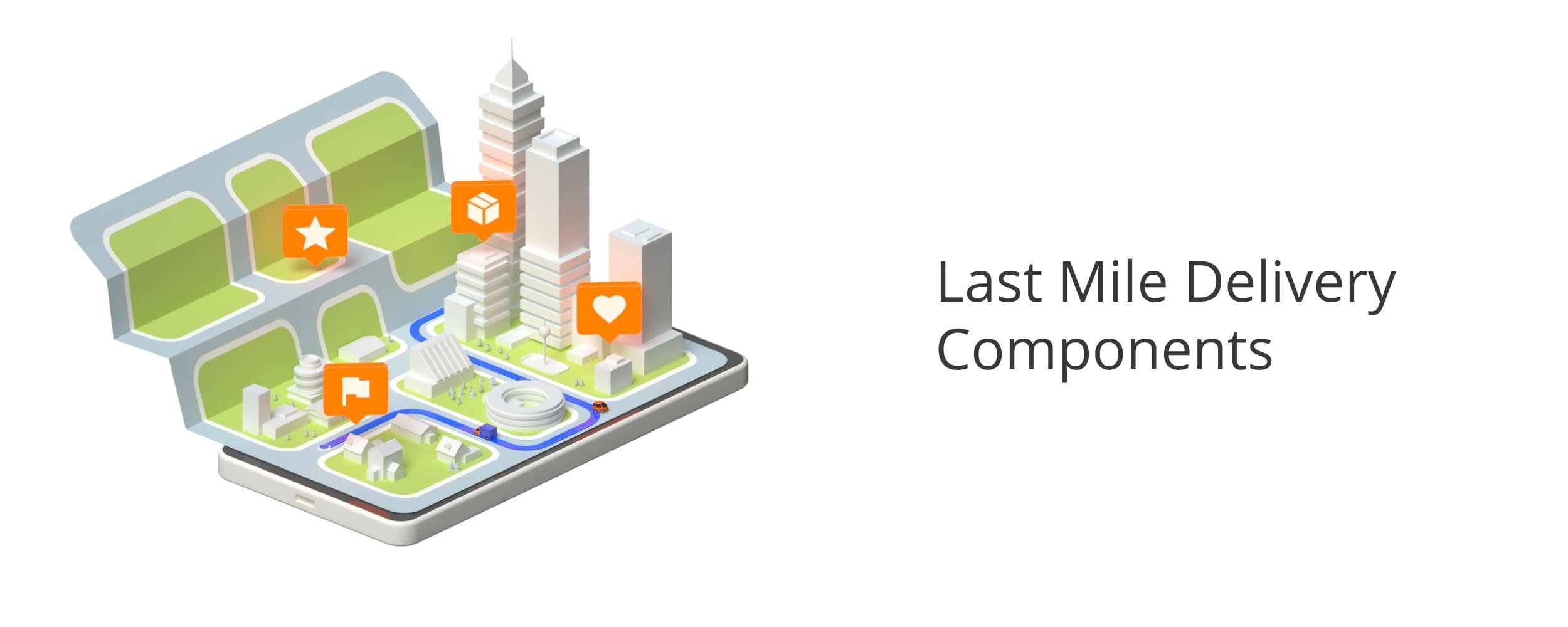
Logistics Challenges And Last Mile Delivery Trends In 2024
In 2024, last mile delivery continued to register high demand as a consequence of the Covid-19 pandemic and the corresponding shift in customer shopping behaviors. Namely, during the pandemic, consumers started ordering more and more online, increasing the need for local delivery. Moreover, shippers and carriers alike were pushed towards a contactless delivery model. In fact, contactless delivery is the preferred delivery method for over 40% of U.S. consumers.
Consequently, last mile carriers looked for opportunities to accommodate this spike in demand while keeping costs to a minimum. For example, last mile automation gained more traction in 2024. In detail, some last mile carriers started experimenting with last mile autonomous delivery, delivery drones, self-driving cars, and robots. Furthermore, to speed up delivery and increase the availability of products, e-tail professionals started investing in urban fulfillment hubs.
So, the last mile environment aims at a smarter, faster, and more cost-efficient fulfillment chain that can keep up with the increase in demand.
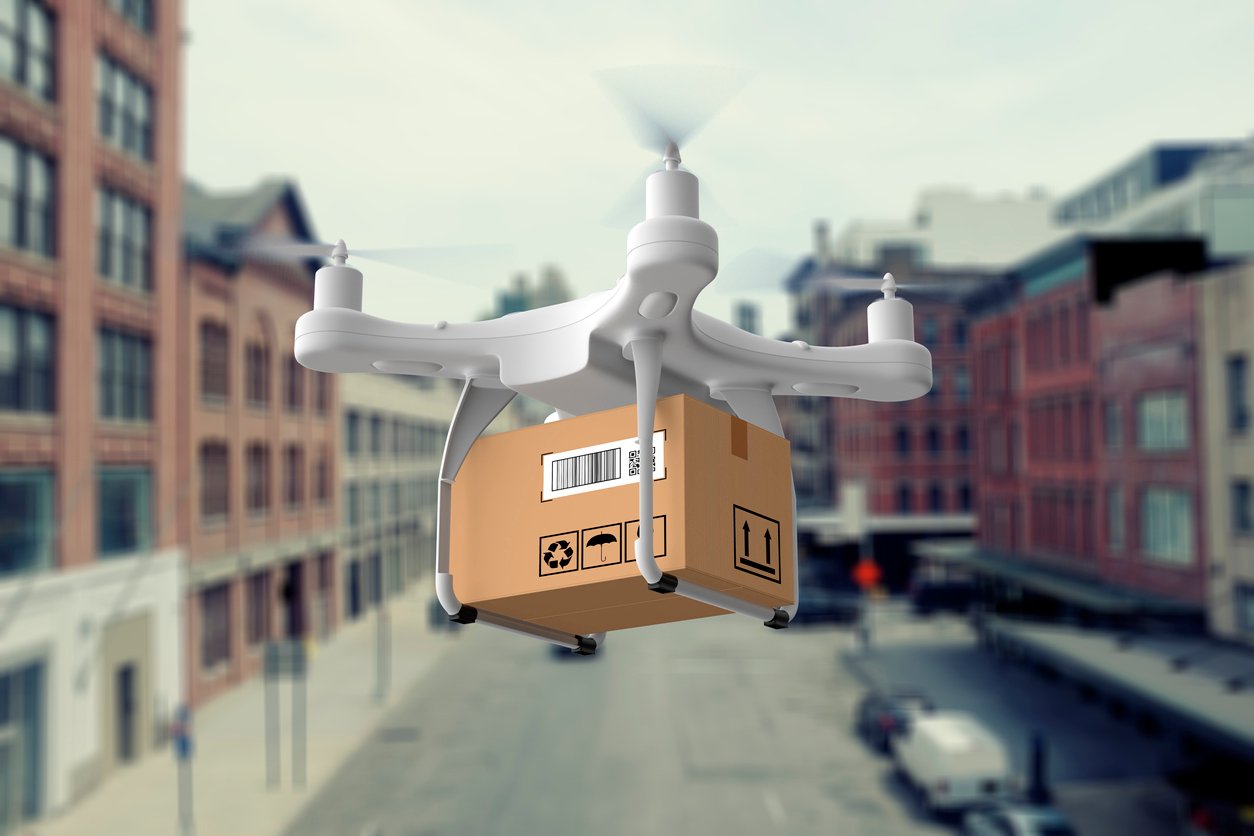
The Best Last Mile Delivery Software In 2024
The best last mile routing software in 2024 is the solution that can provide a logistics-intense business with opportunities for minimizing expenses while improving fleet capacity utilization. Moreover, the ideal last mile optimization solution should offer its users the flexibility to account for specific business needs and customer constraints. Such constraints can include:
- Delivery time windows
- Type of vehicle fleets (mixed fleet optimization vs uniform fleet optimization)
- Vehicle capacity restrictions
- Revenue limitations
- And much more
Despite the subjectivity of choosing the best last mile logistics software, there are a couple of solutions that continue to awe their customers. So, the most in-demand last mile solutions include, but are not limited to:
Examples of Last Mile Routing Software Solutions
- Route4Me Last Mile Delivery Optimization Software: Route4Me’s last mile delivery software enables businesses of any size to optimize their logistics processes with flexible features such as live GPS driver tracking, route planning and route optimization, smart route dispatch, fleet management, order management and order tracking, and a lot more.
- Onfleet Last Mile Delivery Software: The Onfleet delivery software can cater to the needs of small and medium-sized last mile carriers as well as enterprises. Furthermore, Onfleet supports route optimization, route dispatch, customer notifications, and other logistics-specific features.
- MyRouteOnline Route Optimization Online Multi-Stop Planner: MyRouteOnline is fit for smaller fleets as it only supports routes of no more than 350 stops. Although limiting for larger logistics businesses, MyRouteOnline can meet the needs of medium and small businesses that aim to optimize their routes with different service times and optimization goals.
- Circuit Delivery Planning Software: Similar to MyRouteOnline, Circuit enables small and medium-sized businesses to create routes with no more than 500 stops. Additionally, Circuit’s route planner offers features such as ePOD collection and customer notifications.
- Routific Delivery Planning Software: The Routific delivery planner is a last-mile-centered solution that offers multiple tools for route optimization, delivery tracking, delivery notifications, dispatch management, etc. Thus, Routific can be helpful for small and medium-sized local delivery businesses.
- OptimoRoute Delivery Routing and Field Service Scheduling: The OptimoRoute software features multiple tools such as driver management, order tracking, delivery scheduling, live driver tracking, and more. OptimoRoute is suitable for multiple last mile businesses, such as couriers, retail and distribution, waste collection, etc.
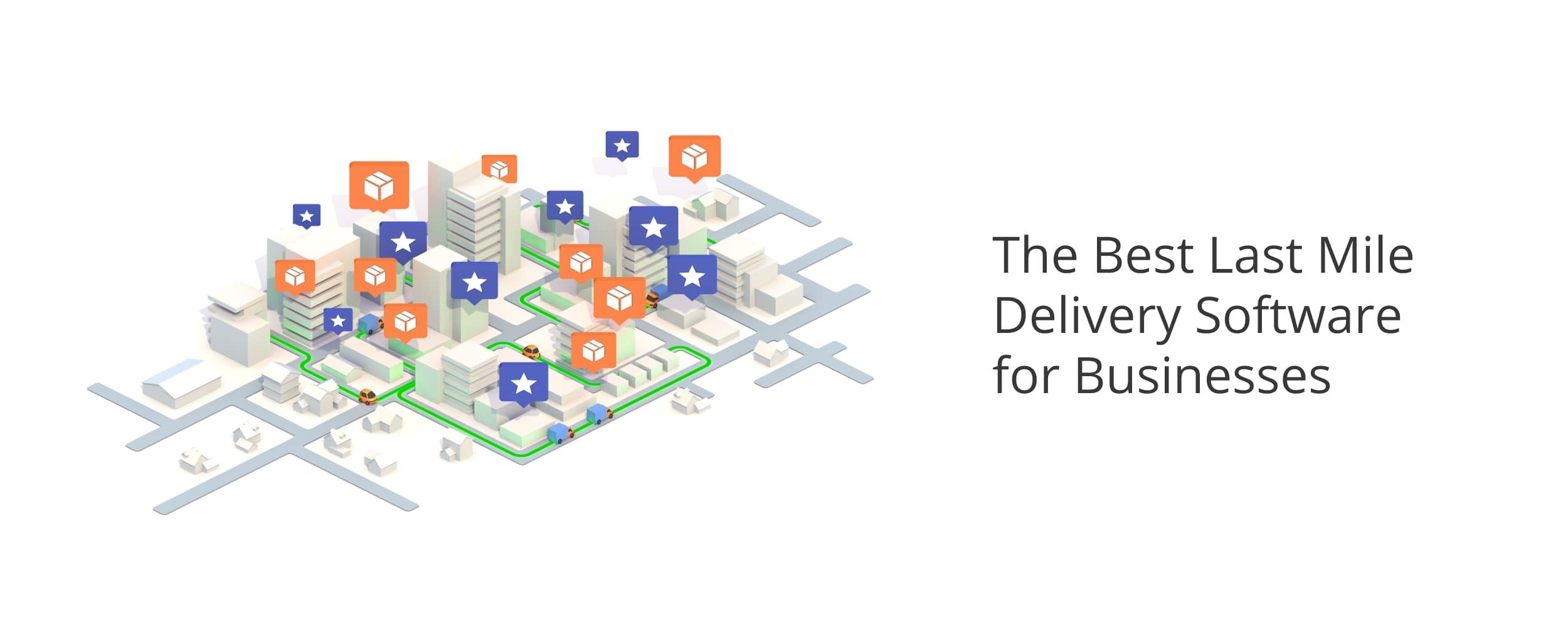
Free Last Mile Delivery Software Trial
Are you ready to tackle the challenges of the last mile?
Route4Me offers new customers a Free Last Mile Delivery Software Trial for an entire week! Moreover, with Route4Me’s trial, you can use your own data, customer details, addresses, and business-specific requirements. This allows you to start optimizing your last mile and create the most cost-efficient and time-effective routes.
That means you can automate last mile routing planning for your deliveries, schedule orders, and drive operational efficiencies with no charge. Your credit card is not even needed when signing up for the trial. Moreover, you have access to Route4Me’s free route planner app trial for iPhone and free route app trial for Android.
What are you waiting for?
Claim your 7 days of free optimized routes, fleet management, and cost-cutting benefits. Start your free trial today and don’t spend another day spending money on unnecessary resources and processes.
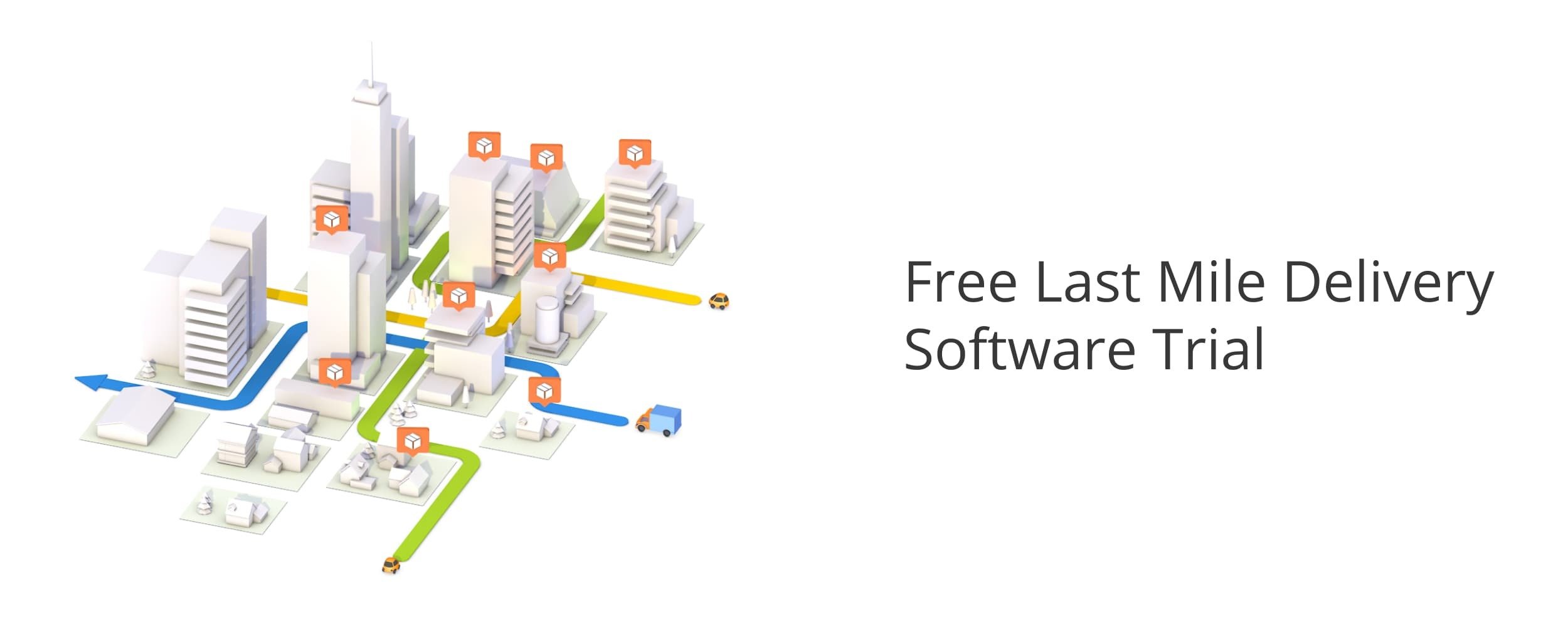
All the trademarks, logos, and brand names on this page are for identification purposes only. We do not endorse these trademarks, logos, and brand names. All the trademarks, logos, and brand names are the property of their respective owners. If any of the trademarks, logos, and brand names are your property or the property of your company, and you would like us to remove them from our website, please contact us at [email protected] to submit your request.
Visit Route4Me's Marketplace to Check out Associated Modules:
- Routing Business Rules
Business Rule - Max Stops Per Route
- Operations
Advanced Team Management Add-On
- Operations
Audit Logging and Activity Stream